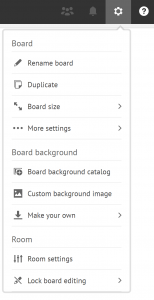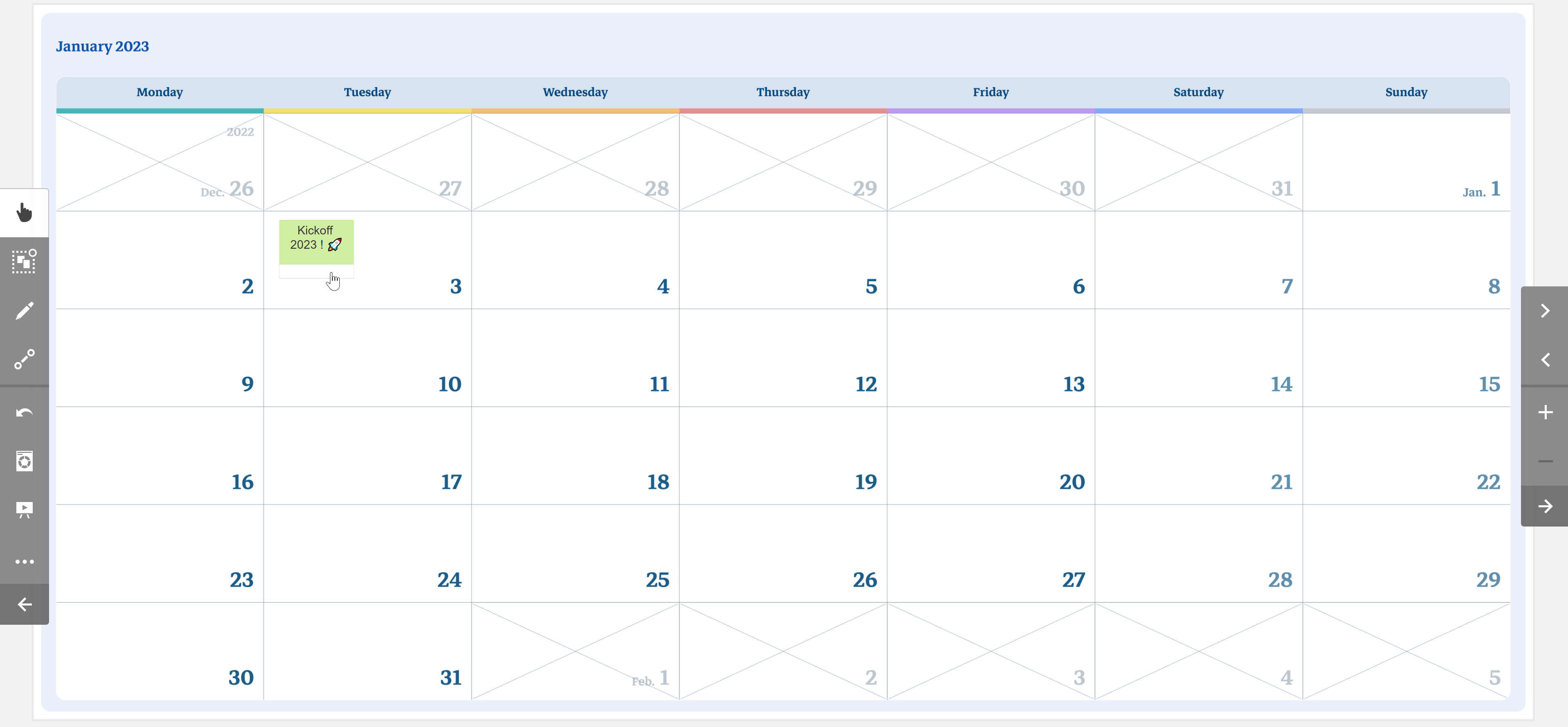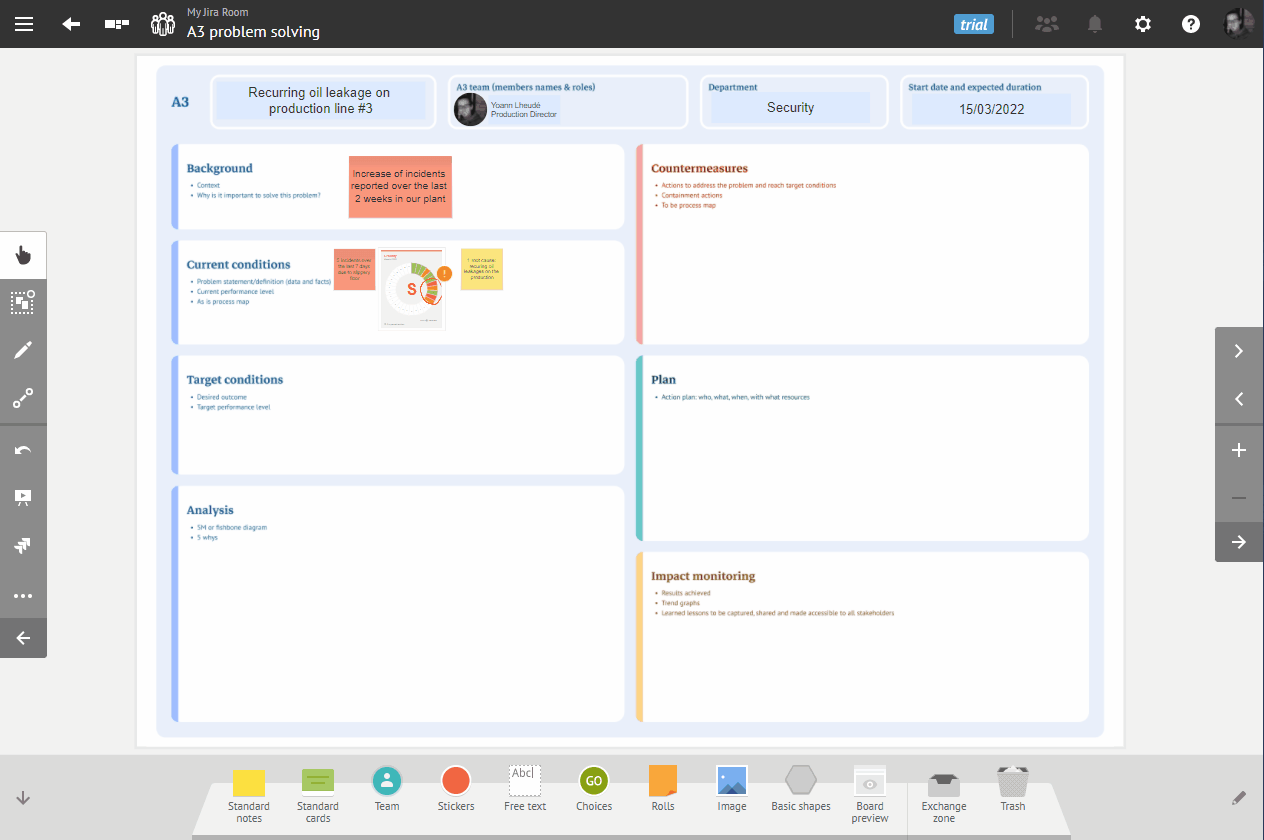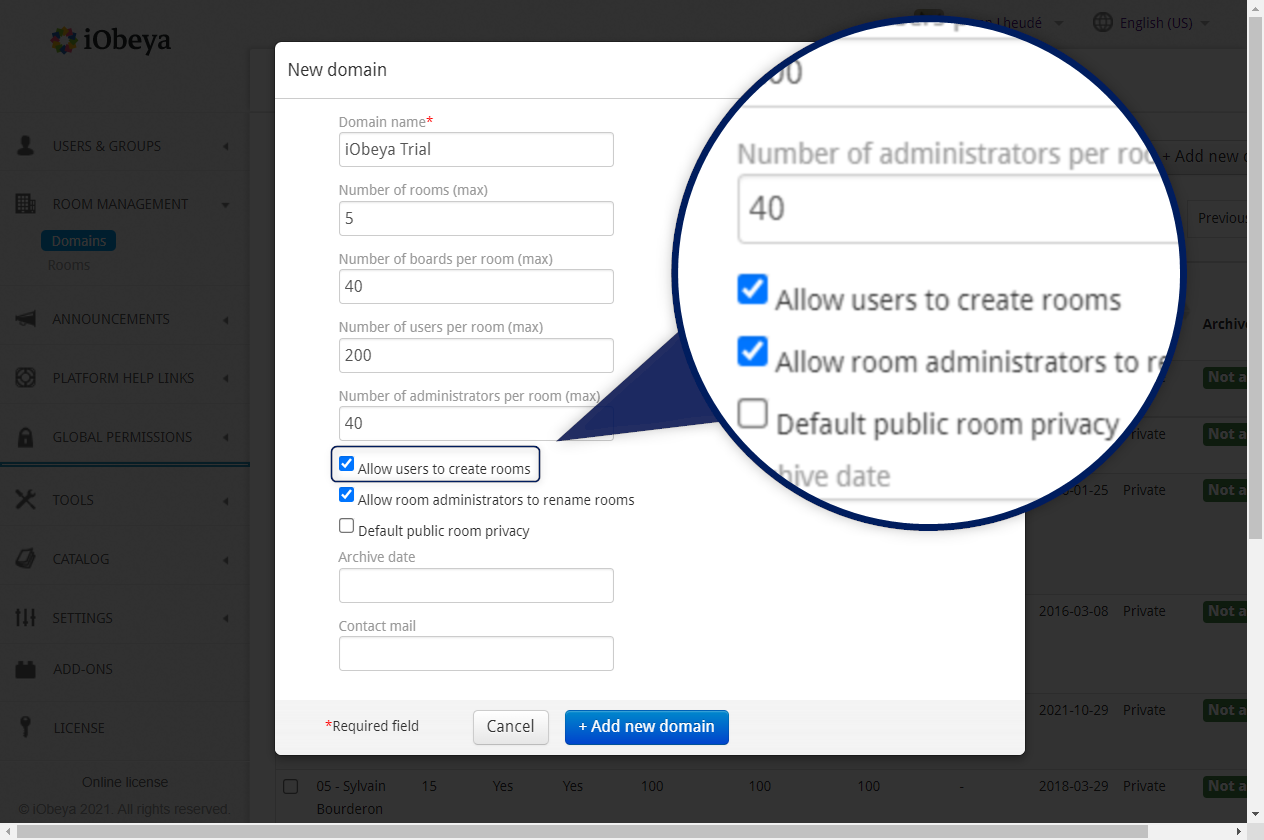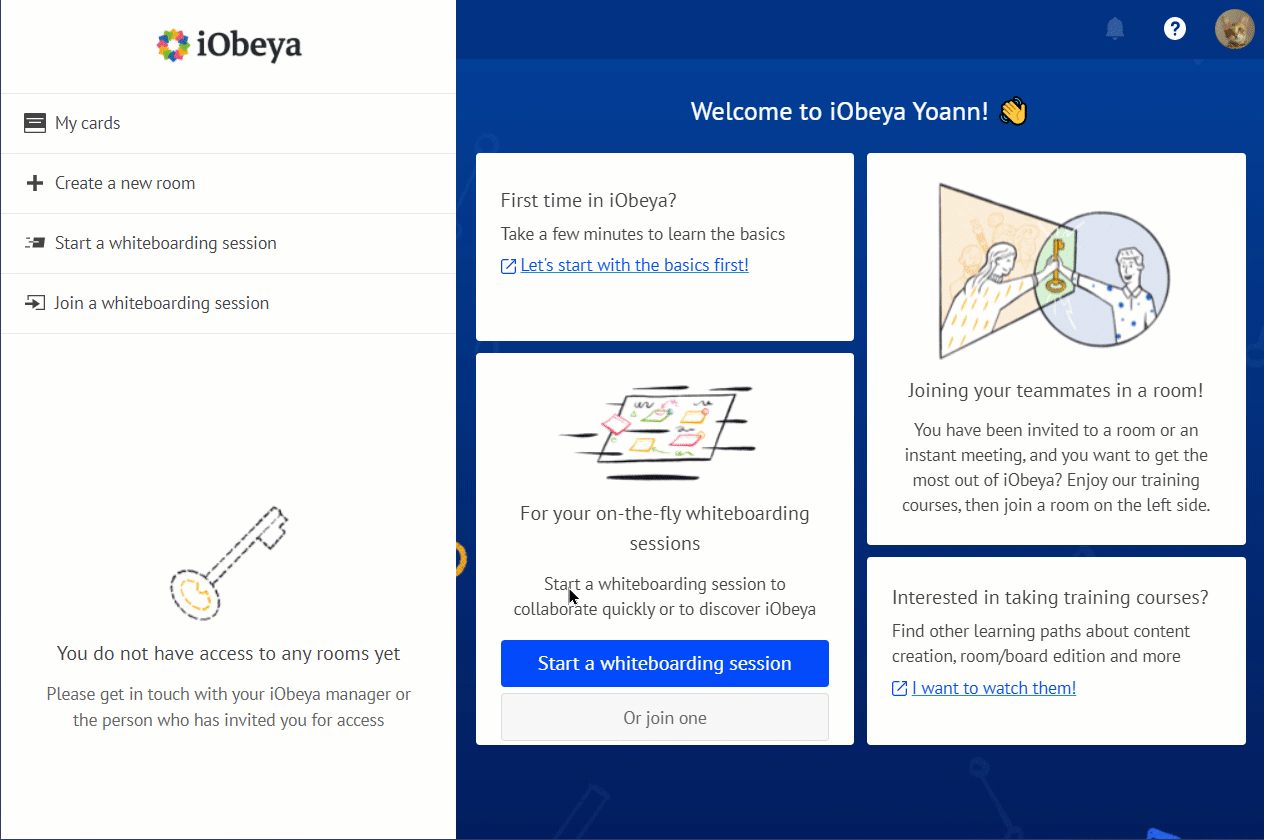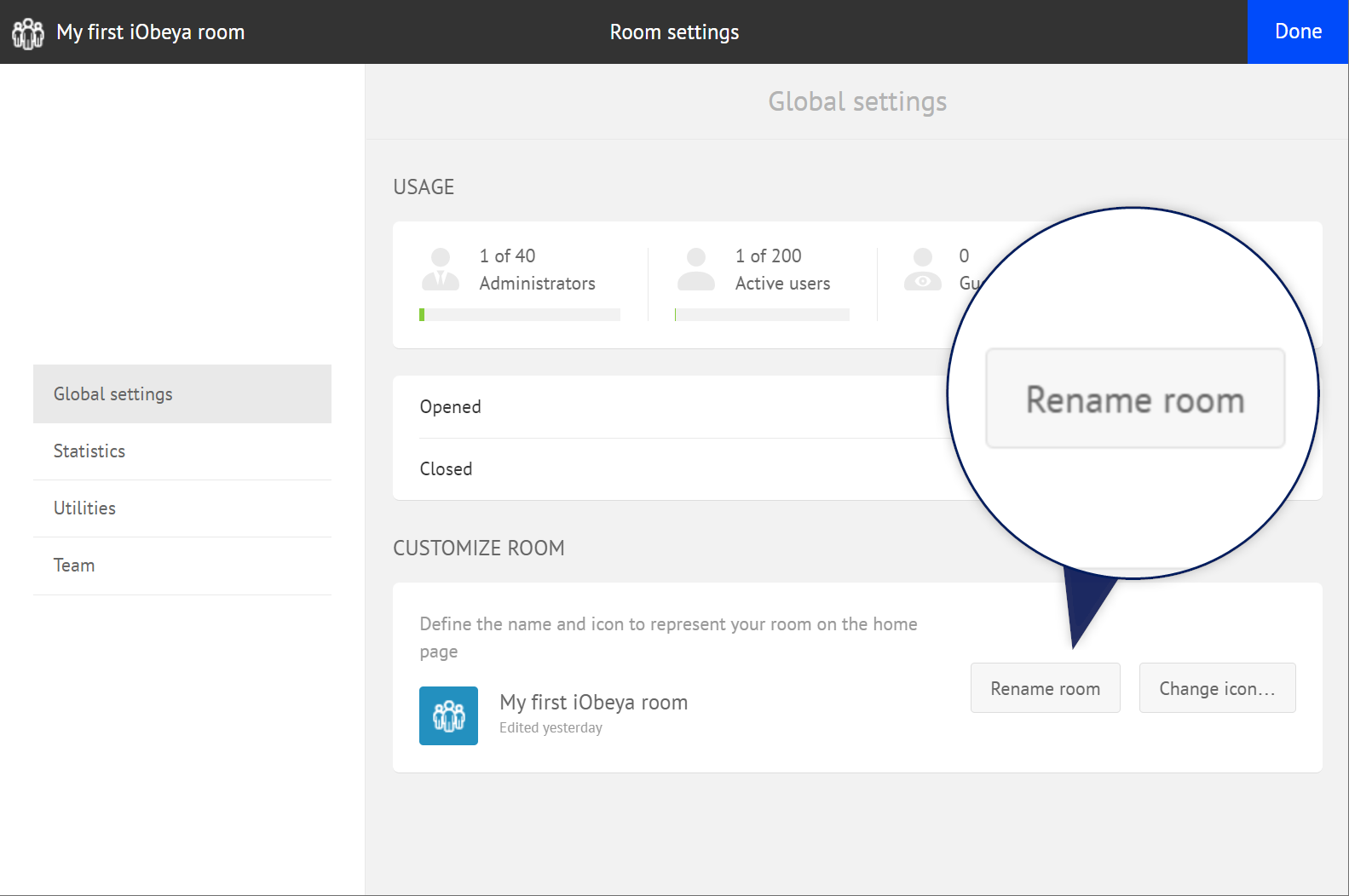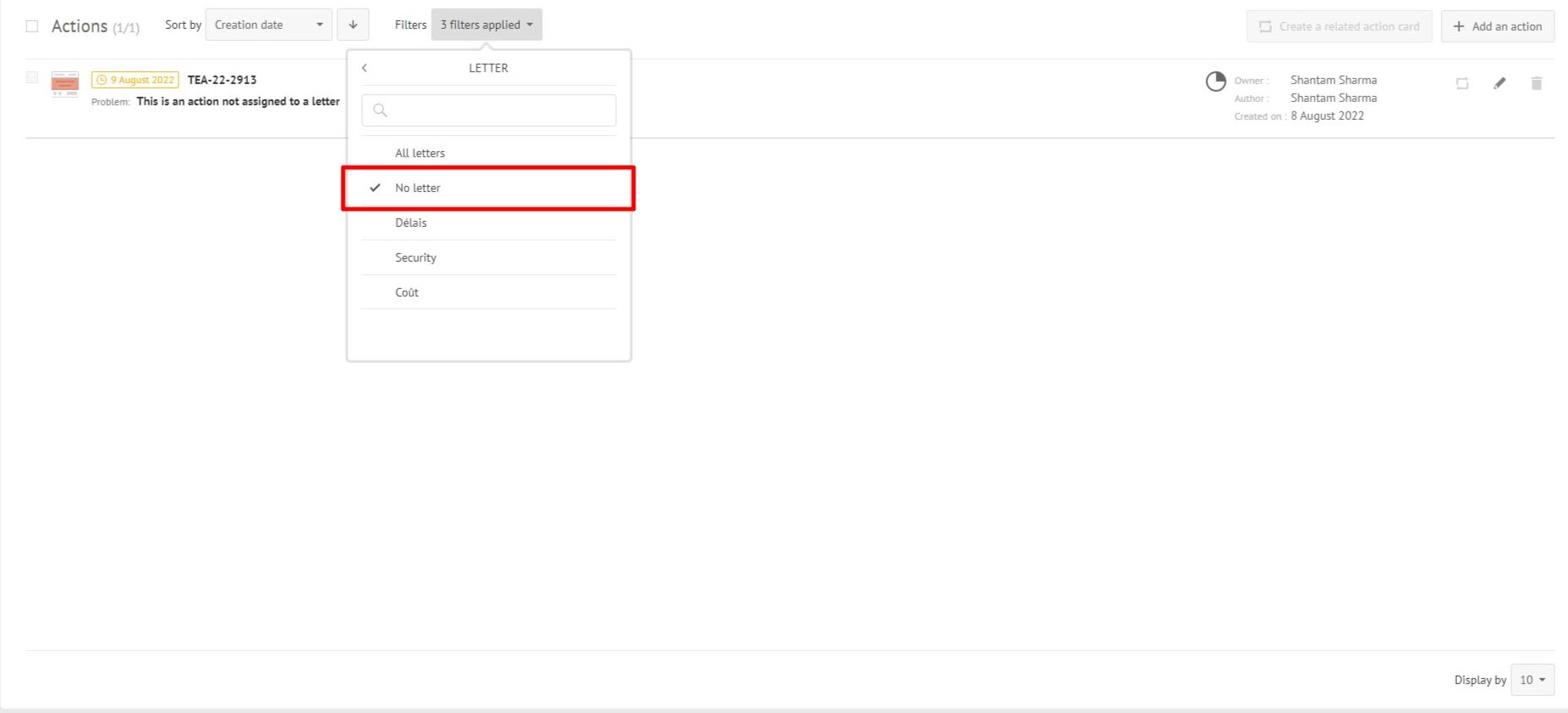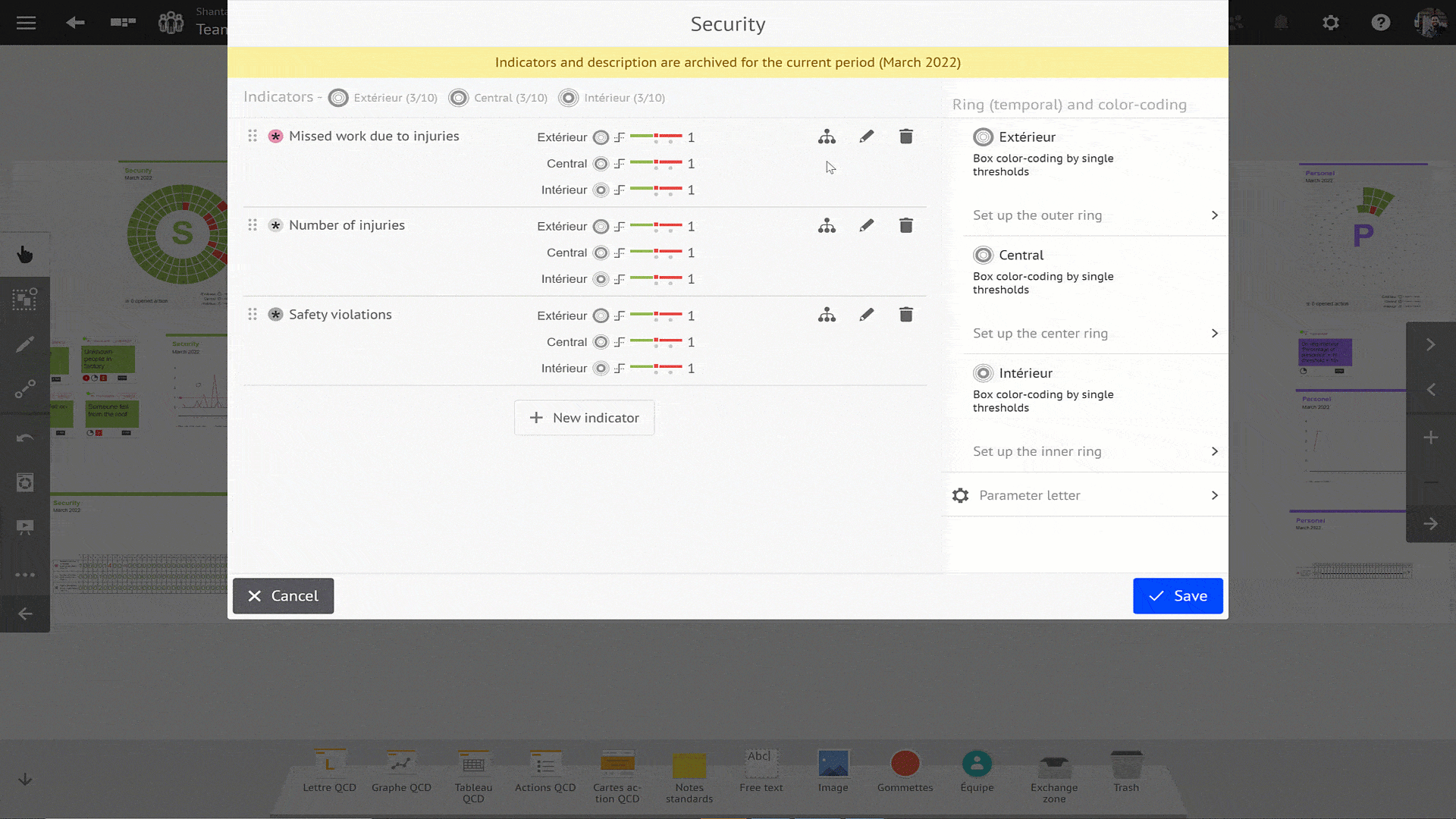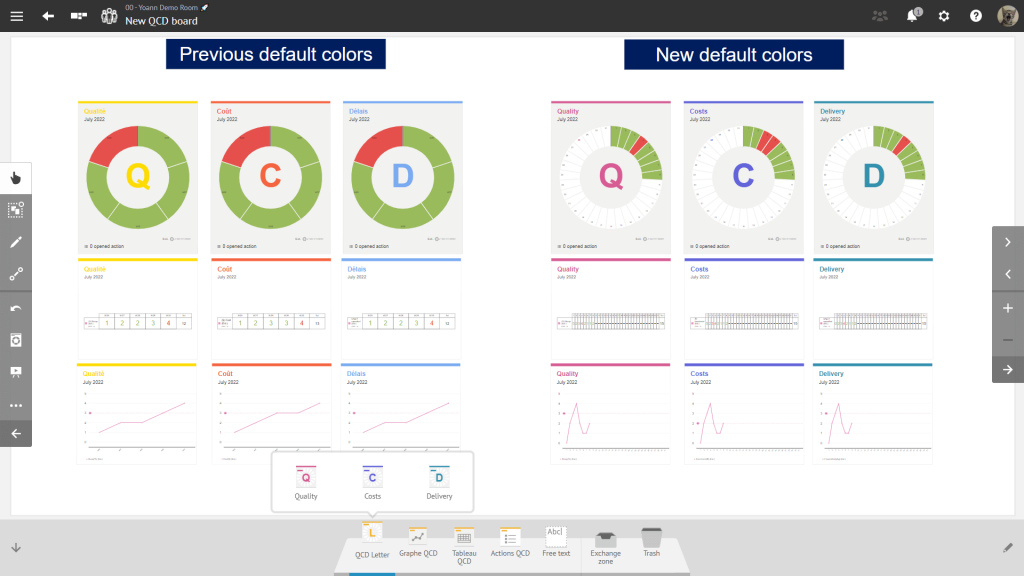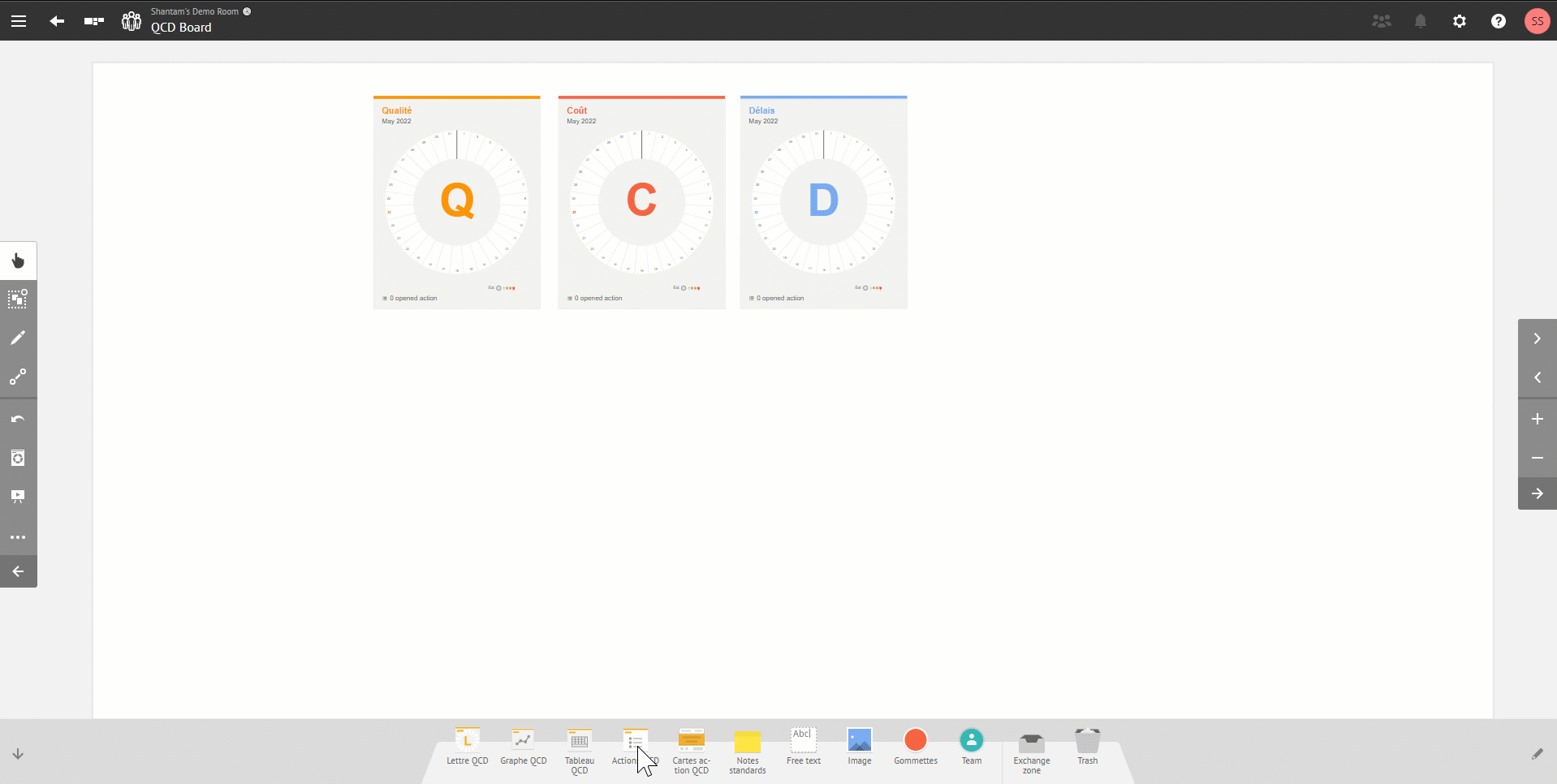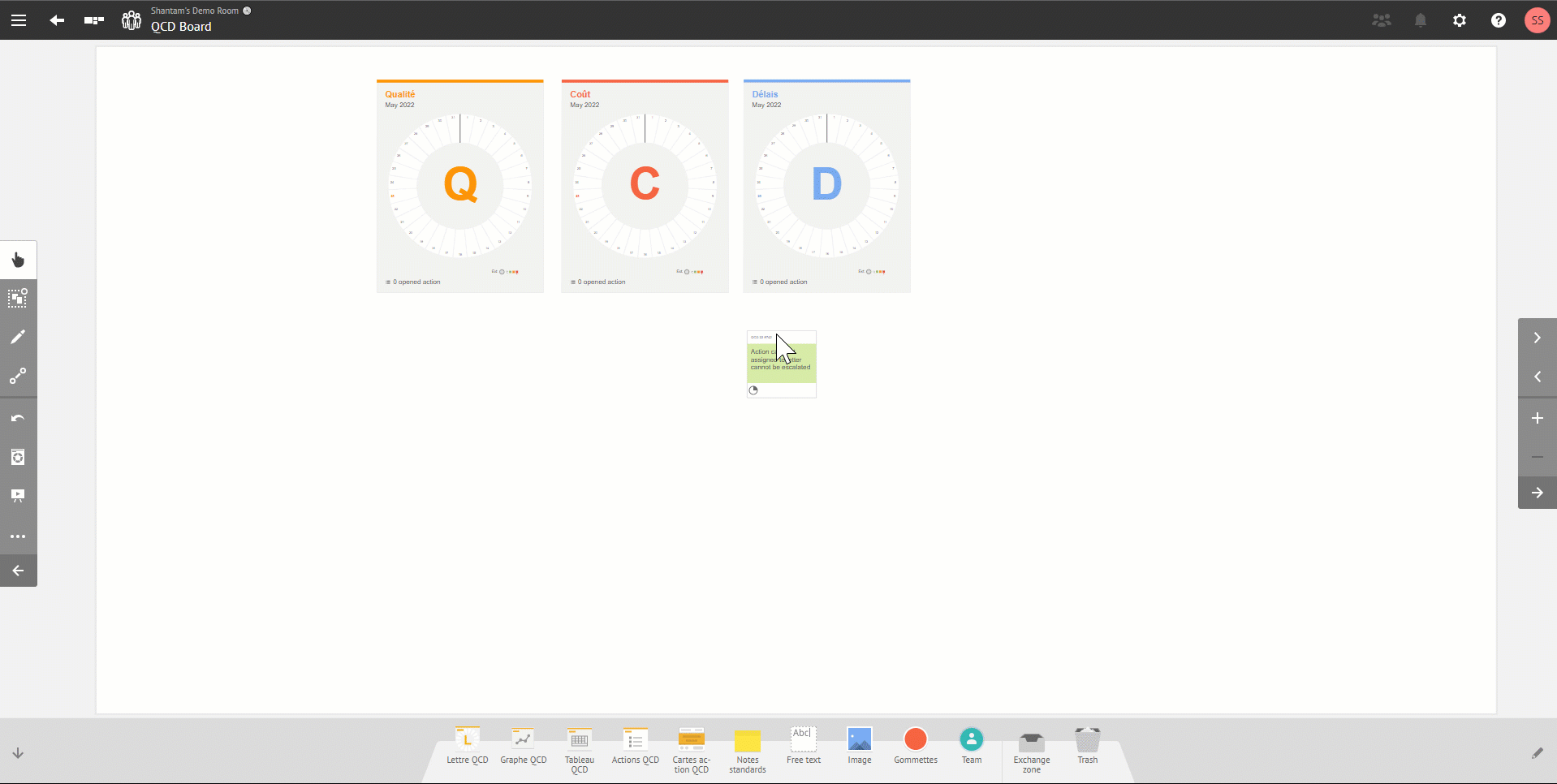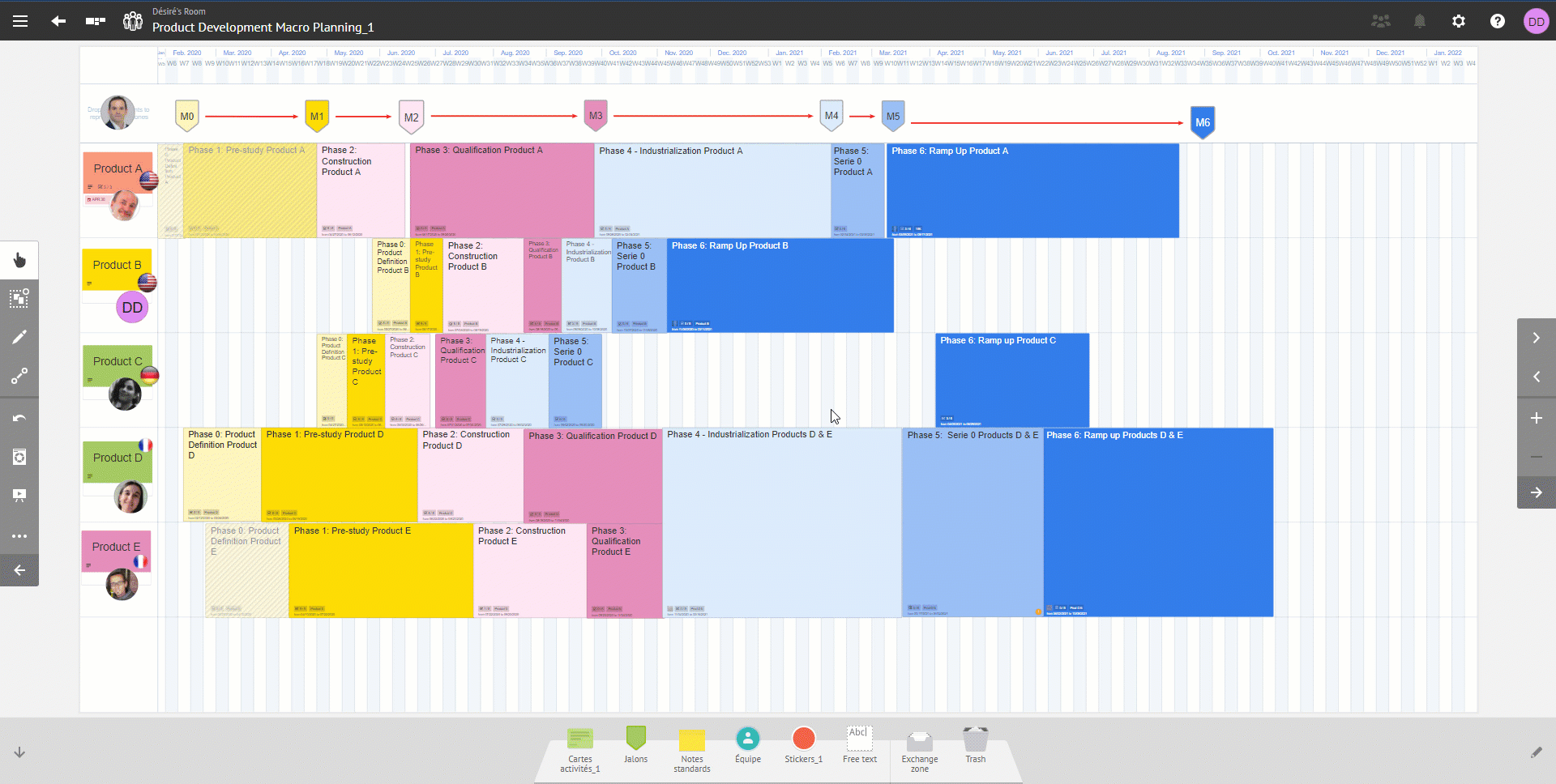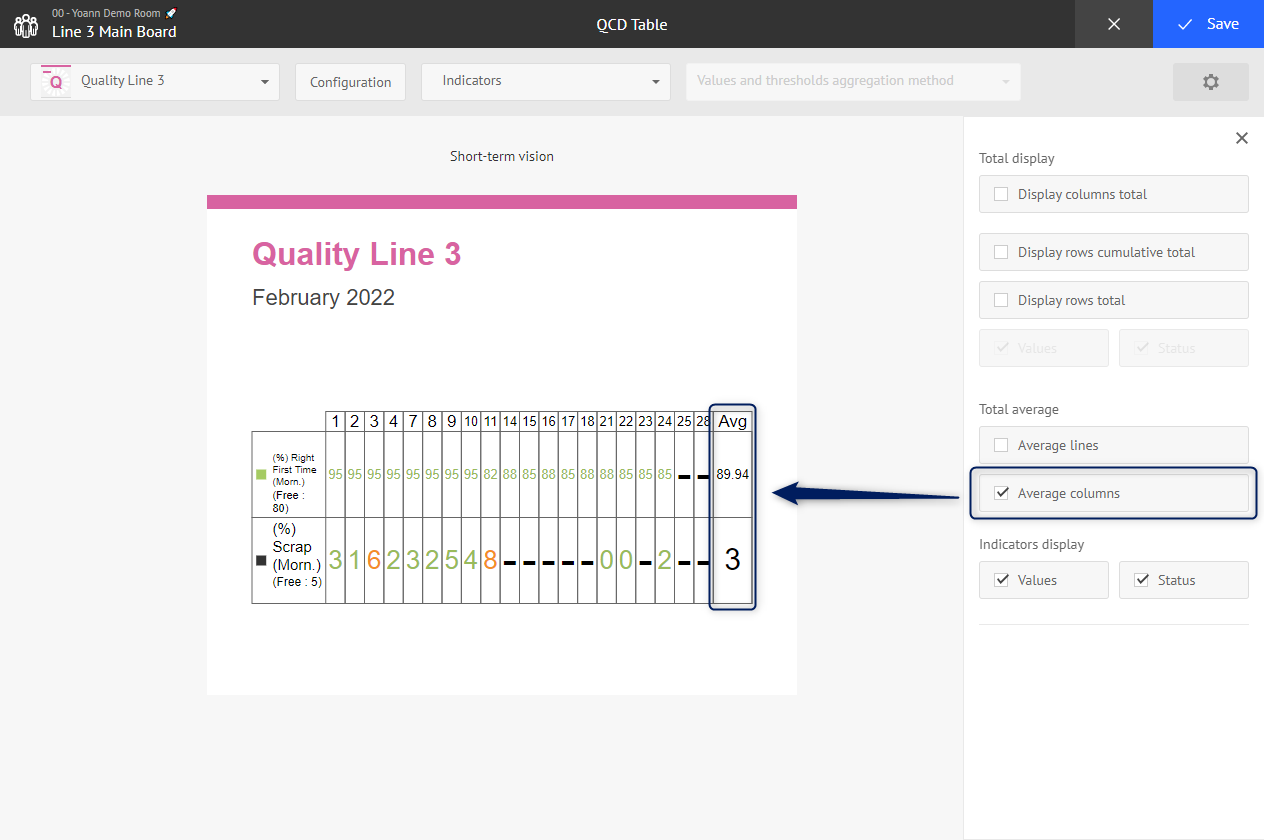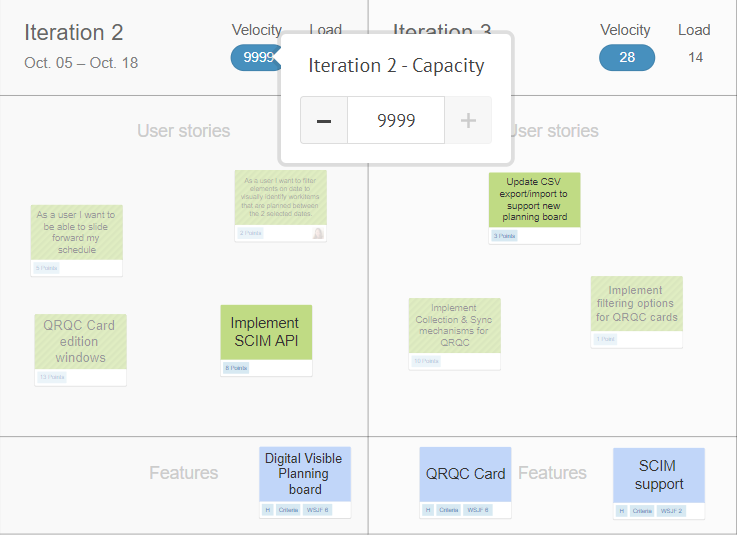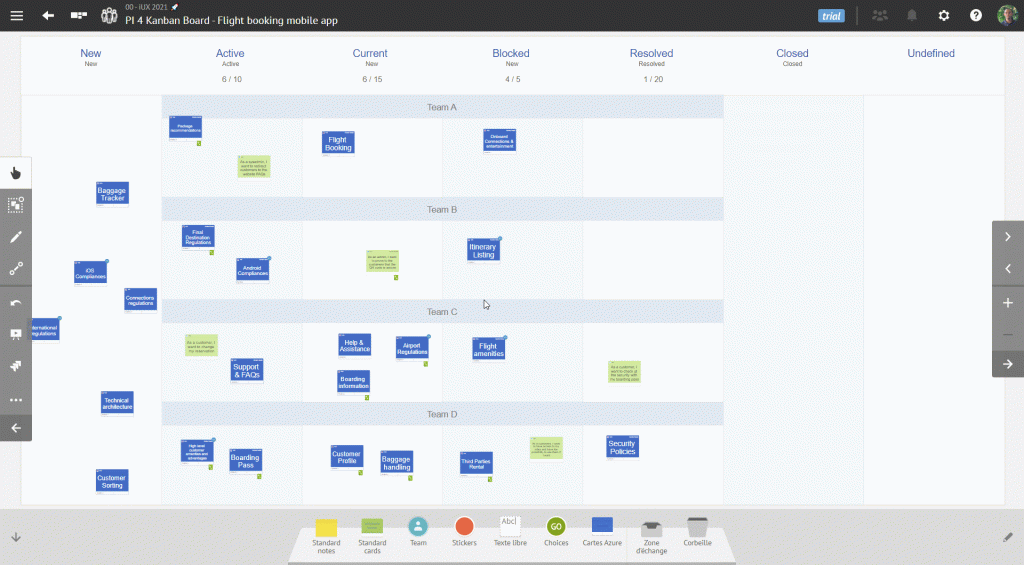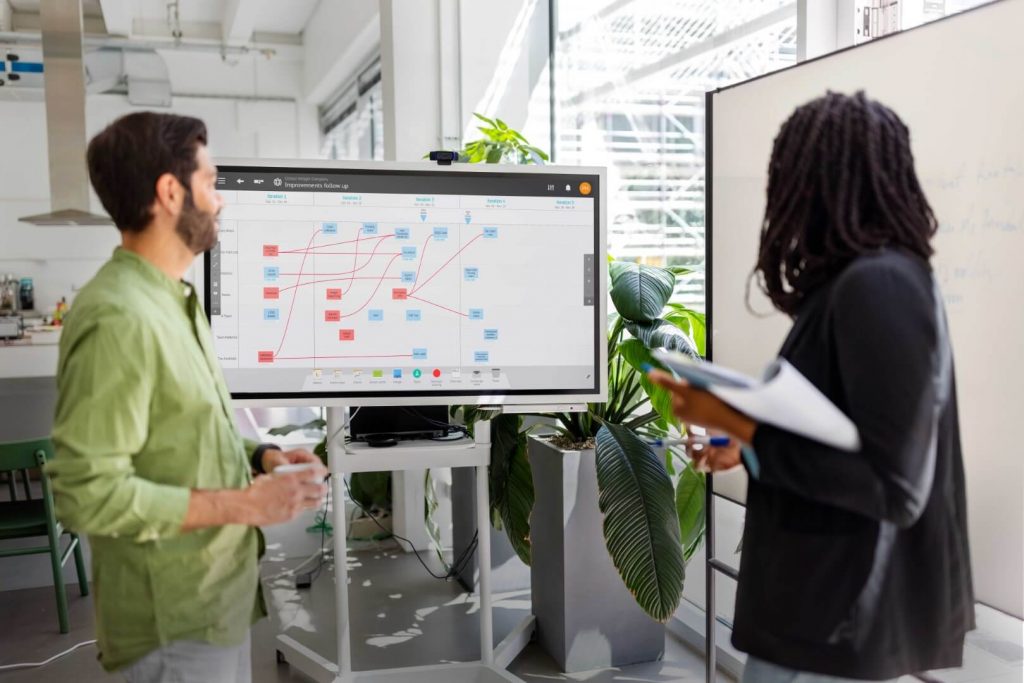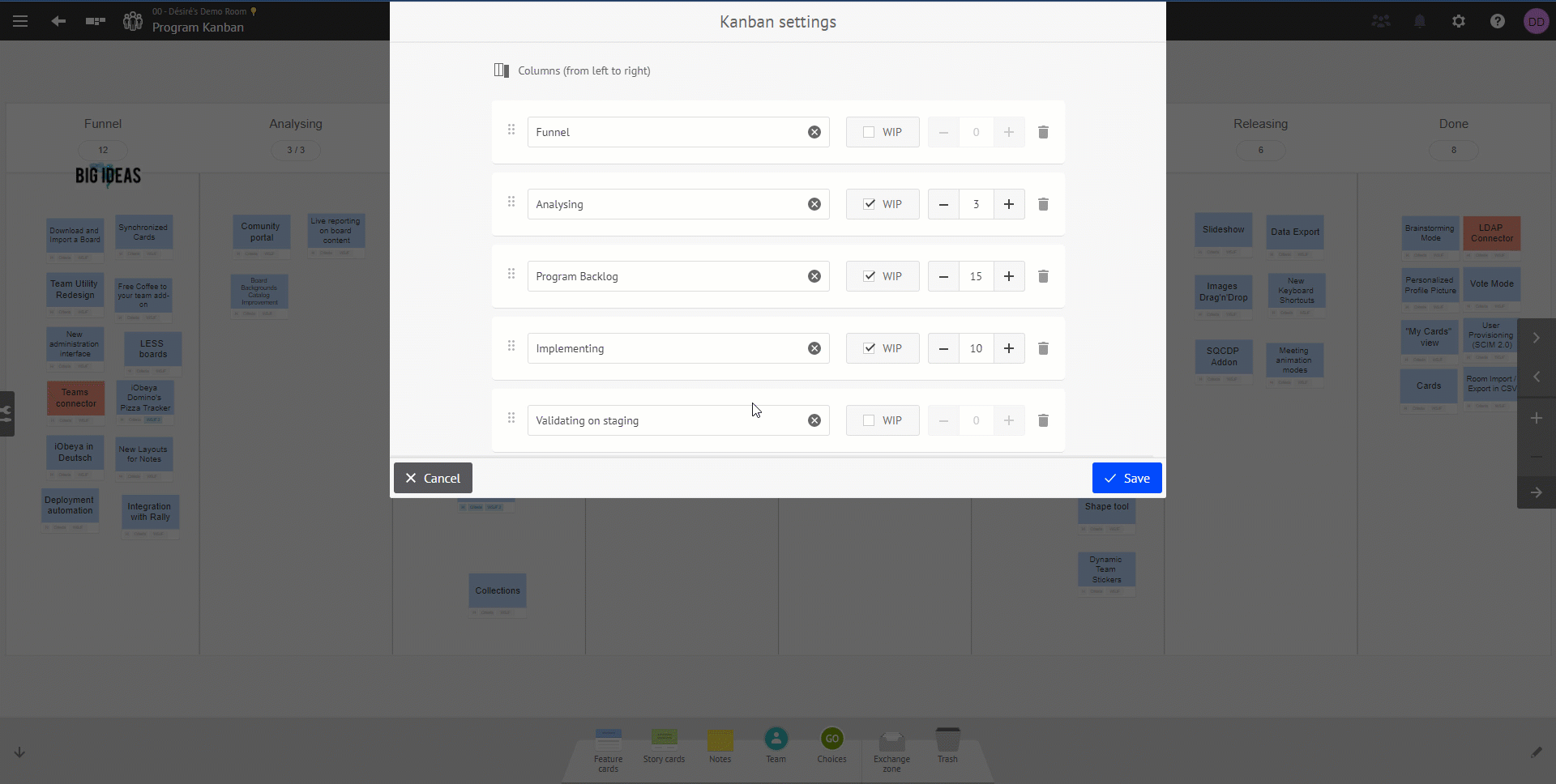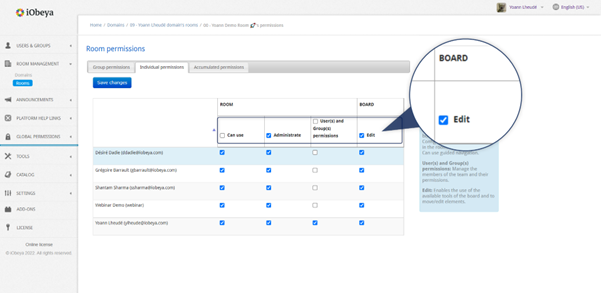What’s new in iObeya 4.12 - On-premise Version?
Disclaimer 📢
This on-prem version combines the new features and bug fixes that were already available for iObeya Cloud versions 4.9, 4.10, 4.11 and 4.12. However, some additional improvements or bug fixes may have been added to the list to make this version certified for on-prem deployments.
General features
iObeya in Dutch 🌷
iObeya is available in 8 languages! We are delighted to announce that Dutch language has now been added to the list with this new version.
Both end user and administration interfaces have been fully localized and are now available in French, English, German, Japanese, Chinese, Spanish, Russian and Dutch.
A unified documentation
Over the years, the iObeya add-ons that were initially used by a few early adopters have been massively embraced. Now most users are combining features from our various add-ons on a daily basis to unleash the power of Visual Management.
To adapt to this new trend, we have reorganized the content for both User Guide and Platform Admin Guide to merge the add-ons documentation with the standard iObeya documentation. Don't be surprised if you only find one entry in the Help menu from your iObeya room: this will eventually lead you to the same sections of the documentation that used to be listed there.
You can now switch easily from one topic to another while discovering new features and capabilities offered by the iObeya platform. You will also enjoy having a single search field across all our documentation to find information and answers to your questions.
This is the first of a series of changes regarding product packaging to improve new user onboarding and accelerate time-to-value with iObeya.
Let’s create customized board backgrounds!
We made it more convenient to change board backgrounds and create custom board templates.
First of all, we have reorganized the board settings menus, in order to highlight the options to modify a board background.
Moreover, you now have access to the new guidelines available as PowerPoint files that aim to help you make your own board backgrounds, including graphical assets and some board examples.
These new files are downloadable from the board settings on your iObeya platform, in addition to from the page dedicated to the Board Backgrounds Add-on on the Resource Center.
2023 Calendar added to the iObeya catalog
We added 2023 Calendars in the Board Backgrounds catalog so that you can plan ahead and prepare next year soon enough if needed!
If the new calendars are not yet in your catalog, ask your platform administrator to download the latest Board Backgrounds add-on from the iObeya Resource Center and install it in your iObeya instance.
Rotate board elements
Have you ever dreamed of rotating iObeya elements such as free texts or images on any of your digital Visual Management boards? iObeya platform brings this dream to reality while enabling new use cases and various scenarios.
For instance, if a picture taken with a tablet PC appears on the board with the wrong orientation, you can easily fix it directly in iObeya.
Rotation can also be useful on text elements to collaboratively build a Hoshin-Kanri matrix, or used with the shapes while you redesign the layout of a production plant in iObeya.
Rotation is available for the following iObeya standard elements: rolls, texts, shapes, stickers, images, and sticky notes. You cannot rotate advanced elements such as the iObeya cards or QCD letters and group of elements.
Self-service room management
Over the last few months, many users requested more flexibility and autonomy regarding room creation and administration in order to respond to the increased demand for hybrid work and collaboration. iObeya brings new capabilities allowing decentralized room creation while keeping control of the licenses used on a platform as they can be independently activated on each domain.
To enable this feature on a domain, first, you need to request your platform administrators to activate the new option available in the domain settings.
Once this is done, any users who have access to the domain will be able to create a new room if there is any remaining license available. This will be an opportunity for new users to discover and try iObeya, or for Lean-Agile coaches to organize training and workshops in a new iObeya room whenever they need it.
In other words, this feature will help you to maximize the value you get from the licenses available on your iObeya platform while accelerating the deployment of Lean-Agile practices in your organization.
As a platform administrator, if you want to give this feature a try while keeping your licenses under control, one simple thing you can do is create a new dedicated domain on your platform for this purpose. Then you will be able to assign a limited number of licenses to this new domain and to configure a contact email address allowing the users to notify you when all the licenses are used. Once the domain is configured, you can give access to the power users of your choice, or any person you want to involve in your Lean-Agile transformation journey.
Room administrators can rename their room
In the past, when a team needed to change the name of their room to better reflect their mission, or the new project that they were working on, this action required help from a platform administrator, until now !
Following the same principle as the new self-service room management feature, we've added a second setting that can be activated on each iObeya domain to provide the ability to room administrators to autonomously rename their room in the room settings panel.
While some organizations using standardized naming conventions will be able to keep control of the name of their iObeya rooms, this new feature will enable many others to reduce the number of requests to their IT department to change the name of their rooms.
It will provide much more autonomy for room administrators, as many of you requested, without being necessarily activated on any domain: the choice is yours!
Lean enterprise & manufacturing
QCD add-on (Enterprise plan)
Reminder ☝
This is an add-on that need to be installed and activated on your iObeya platform. If you can't find it, you need to request to your platform administrator to install this add-on.
Creation of an option on/off for escalated actions via the action table mode 3 "All rooms"
In iObeya 4.8 we had to make some changes to the behavior of viewing escalated actions from an action table due to security and privacy constraints. Before, when an action was escalated, all users, even those who did not have access to the source room from where the action was escalated could access it. So, with this mode 3 “All rooms”, all actions of a source room whether escalated or not, viewed from the action plan, were accessible. This was effectively identified as a loophole by our security team and we made changes to block this loophole, thereby, blocking access to all actions in the escalated room if a user did not have access to the source room.
After feedback from many of our users on how this blocked their day to day activity we have acknowledged this request and created a workaround in the form of an “option” in the QCD escalation settings.
So what does this option do? Well, by default this option is turned "off" in the room and QCD actions function as they do presently. When this option is turned “on” (only possible by a room admin), it will allow users that do not have access to the source room from where an action is escalated to view its “escalated actions” via the action tables mode 3. Non escalated actions remain not accessible in accordance with the standard permission management system.
So, the next question that might come to your mind, why did we not rollback the original settings? The reason is simple, while many of you would like to give access to actions of a particular room to all users, there are many clients who would like to keep the privacy of certain rooms, for example, rooms dedicated to R&D which might have sensitive information and these clients do not want all users to have access to actions of a certain room.
This functionality gives users the flexibility to choose between the two options instead of us having a default setting!
A new filter for Actions not assigned to a letter
In iObeya 4.10, we gave you the option to create action cards not assigned to a letter. Now, to keep on improving on this functionality, we have also created a new filter in action plans which empowers you to filter these actions not assigned to a letter, so that you can continue prioritizing and solving your problems more efficiently.
Responses to escalated actions in action tables mode 3 "All rooms"
Previously, when escalated actions were responded to by a higher level of your organization, they disappeared from the action table mode 3 "all rooms" in the source board/room: although the action was present on the board, it could only be accessed/seen on the source room’s board action plans, which could be a cause for confusion for the user.
Well, we have decided to improve this behavior with this version! Now, when an escalated action has an answer, it will appear automatically in the action table set in mode 3 of the source board/room or the board/room from where the action was escalated.
So, no more confusion or searching for this action! All you have to do is open the action card through your action table mode 3, read the response, and if you find that the response solves your problem, close this action!
You will also notice that the action does not disappear from the action table of the escalated room. This is intentional, this action will only disappear when the action has been closed in the source board/room! Why? Well, because this will empower the user who escalated action, once this user has a response they will need to see the answer and by closing the action they will confirm that the solution to the problem was taken into account by them and that it has been implemented. It also gives the user at the higher level the visibility to see if the action was indeed implemented and thus will improve follow up of continuous improvement initiatives in your organisation.
This feature also effectively completes the problem-solving loop of the user creating a problem, escalating it if not able to solve it at their level, getting the response, and then validating the solution by closing it.
Keep indicators list when switching between global consolidation operators (Sum, Avg, Min, Max)
Did you setup your indicators and global formula to consolidate your indicators and then suddenly realize that it was not the formula that you wanted?
We have updated this functionality so that now, you can switch between default global consolidation formulas such as Sum, Average, Minimum and Maximum, while still keeping your indicators in the console with no need to re-configure them! This will save time and improve efficiency at all levels of the QCD module usage in your organization, especially when you are looking for a bird’s eye view of your shopfloor’s daily activities.
If you want to learn more about data consolidation and information sharing between different teams and department, check-out our new training path Scaling up your QCD usage.
Default colors of QCD letters have been changed
By default, QCD letters are available with three different configurations providing some colors offered by iObeya. These colors are then used by default when adding QCD letters, charts or tables on a QCD board. As such, we recognized that the default colors did not offer a good contrast ratio with the gray color from the letter’s background, which made it really difficult to read, especially on video projectors or screens that are not well calibrated.
So, to improve the legibility and accessibility of the QCD module we decided to change these default colors! But, no need to worry, as these changes will not impact your existing QCD letters, boards or tools!
Search room by name when configuring the QCD escalation
Do you want to set up an escalation for a new or existing room but find yourself getting lost scrolling through too many rooms?
We have introduced a new search bar in the QCD escalation settings to simplify this process, so now, to follow up on escalated actions you just need to search the name of the particular room to find it faster, select it and continue problem solving by escalating to the right levels in your organization.
If you are looking for escalating actions from one room to another, “vertically” or “horizontally” making the most of your room network, check-out our new training path Scaling up your QCD usage.
Create and integrate QCD actions on any boards
Today, you can create actions not assigned to a QCD letter, which means, you can use QCD actions on any iObeya board. Going one step further, we have created the ability for you to be able to see these independent actions on any Visual Management board and start problem-solving!
So how can you do this? Well, by creating a QCD action table and selecting mode 3 “All rooms'' you will be able to select any board from any rooms you have access to and see any actions listed in the QCD action table. These actions can then be used by your organization to problem solve.
This effectively integrates the problem-solving framework offered by our QCD module with any other boards in iObeya and opens up new possibilities to connect the Lean & Agile parts of your organization’s Visual Management System!
Ability to escalate action even if no letter is assigned
We recognized the need for you to have more flexibility with your QCD actions.
So, as you already have the functionality to create actions without a letter, and now can import QCD actions from a non-QCD board, it is, but obvious that the next step to this is the ability to escalate these actions that are not assigned to a letter. This gives you flexibility over your actions and facilitates problem-solving like never before.
Stuck with a problem? Not sure what part of your company operations it is linked to? Create a new action, escalate it to the next level and get your questions answered!
Empty zone on planning boards
The iObeya planning board helps your teams to easily manage projects and visual planning activities.
In this new version, we have heard your request and it is now possible to add an empty zone on your planning boards. This will add a blank area next to the schedule and you will be able to choose where you want to display it: on the right or at the bottom of your board.
This functionality is available for both new and existing planning boards. Therefore, it can be used for multiple usages such as:
- Add a backlog area to store activities that need to be scheduled
- Add a performance management zone to display KPIs helping the team monitor project's health
- Add a board preview and visualize any other information that can support your decision processes
- and much more!
Display the average value for each indicator on the QCD Table
The QCD Table component can be used on an iObeya board to display the values of your performance indicators collected with the QCD module. It helps to analyze the trend for the current period or a longer period by aggregating values from the QCD history.
It will now be possible to display on a QCD Table the average value for each indicator by activating a new option available configuration window. This setting works for both short-term and long-term configurations, allowing you to create the visualization you need to analyze your performance data.
Agile@Scale
Reminder ☝
These are add-ons that need to be installed and activated on your iObeya platform. If you can't find them, you need to request to your platform administrator to install the Agile add-on, Jira connector and/or the Azure DevOps connector.
Supporting up to 9999 story points of capacity in Agile boards (Agile, AzureDevOps & Jira)
Story points are units used in Agile methodologies to estimate the workload required to fully complete a story, or any piece of work to deliver value.
As the possible use cases can vary from team to team or project to project, we have increased the number of the capacity that can be supported in one board.
Therefore, from now, for the Agile Team Board, Jira Sprint table, and Azure Sprint table, you will be able to choose a capacity value up to 9999.
Better management of classification nodes: area and iteration paths
Area and iteration paths, also known as classification nodes, allow you to group your work items into different types of elements or time-related periods in order to classify and define a hierarchy of paths. Until now iObeya only retrieved the leaf of your area or iteration tree.
Based on recent feedback, we are happy to announce that in this new version, you will now be able to retrieve all the different levels of your classification nodes in iObeya.
Wherever you will have an Iteration Path or Area Path field, you will be able to retrieve all the classification nodes configured in Azure DevOps.
Moreover, to help you navigate complex project classification structures and easily find the right information, we have decided to improve the way of searching values. These new search criteria will help you easily and quickly find the values you are looking for.
To see more about the search criteria for Area and Iteration Paths, please check the documentation available here.
The Azure DevOps Kanban table
In version 4.6, we introduced the new Azure DevOps connector, which included the Azure Sprint Table which helps you plan your work within your sprints in a user-friendly interface.
We continue to strengthen the maturity of this connector by covering more and more use cases in iObeya, and by introducing a new table: the Azure Kanban table.
This Kanban board will allow you to connect your iObeya boards to your Azure DevOps flows of work. In fact, by moving your Azure cards from one column or row to another, iObeya will automatically change the corresponding values in Azure DevOps, and vice-versa. While setting your Kanban table, you will also be able to:
- Select and reorder the steps of the workflow you want to display in your Kanban table
- Display the swimlanes to visualize different categories of work as rows on the board
- Display the Work-in-Progress (WIP) limits configured in Azure and, that way, visualize the WIP for each step of your workflow
With this new Kanban table connected to your Azure DevOps data, it has never been easier to quickly identify your bottlenecks and boost your productivity.
Ability to rename SAFe Team Boards
The Agile add-on provides content and features to help you speed up your Agile transformation. Thanks to our partnership with Scaled Agile, Inc., we offer all the Visual Management boards recommended by SAFe to deploy Agile practices across teams and increase productivity and value created.
With the Kanban board, the Program Board and the Team Breakout board, you can prepare and host your PI Planning events in any context, face-to-face, hybrid or fully remote.
The Team Breakout board has been designed to be used in combination with the Program Board to help teams plan their sprint according to their capacity. However this board can also be used to support other rituals than PI Planning and needs to be more flexible.
Users will now be able to modify the name of any existing Team Breakout board by editing the settings via the board menu.
A predefined order in the “configure links display” tab for Jira and Azure DevOps connectors
Since iObeya 4.8, you have the ability to choose which type of links you want to display on your Jira and Azure DevOps boards. This functionality allows you to identify and manage your dependencies while keeping control of the information you need to display depending on your Agile rituals.
However, the order of the links listed in the “configure links display’ window was random and can change anytime you open this configuration window. From now, the different types of links are always displayed in alphabetical order and will remain at the same position in the list.
Modify the columns of an existing Kanban board
The Kanban board is an essential tool in Lean-Agile practices allowing people to balance workload with capacity and making your bottlenecks more visible and easy to address. From a simple todo list "to do/doing/done", to more advanced workflows, Kanban is at the heart of any flow management model and practices.
In order to improve team engagement and allow them to quickly respond to organizational changes, we have decided to make the iObeya Kanban board more flexible. In iObeya, you will be able to freely modify the columns of your Kanban board by adding, reorganizing, or deleting any columns. This functionality is now available for both new and existing Kanban boards.
More than giving more visibility and transparency to your projects, the iObeya Kanban board will help you adapt your workflows and develop a continuous improvement mindset in your teams.
Platform Administration
Easier room permission management
We continue our efforts to simplify the administration of iObeya rooms on a platform while improving the user experience for both platform administrators and regular users. Since we’ve increased to 200 the number of users that can be added per room, initializing a new room may require lots of manual actions that can be time-consuming for platform administrators.
We introduce 2 changes in the administration interface to simplify day-to-day administration tasks.
You can now copy/paste a list of usernames or email addresses separated by a space to search multiple users at the same time and then select a predefined role to be assigned to all the users you’ve selected.
If you have to bulk change permissions granted to users in an existing room, you will now have the capability as a platform administrator to bulk-select permissions via the shortcuts available at the top of the permission table.
As a reminder, in the previous version of iObeya, we’ve introduced a room self-service option allowing you to reduce the effort required to open new rooms while enabling platform administrators to focus their efforts on tracking solution adoption.
Performance and Scalability
We continuously strive to improve the performance and scalability of the iObeya platform. Below is a list of product areas and features where you can experience better performance.
- Optimization of /getactionslistfilter service endpoint response time which is used to filter different types of actions coming from a letter, associated with a board/room, or actions escalated for faster loading of QCD action plans
- Optimization of/getactionletter service endpoint response time for faster loading of QCD action edition interface and QCD action plans
- The QCD action plan with many actions opens much faster
- Saving QCD escalation settings in the room parameters
- Displaying QCD escalation notification when entering in a room took a significant amount of time, this has been improved, but also now notifications can be activated or deactivated by you manually
- The time to migrate and to bootstrap iObeya to a new version has been reduced
Release notes 4.12 on-prem
To learn more about what changed in iObeya 4.12 on-prem, read the detailed Release notes to get the full list of changes and bug fixes included in this new version.


